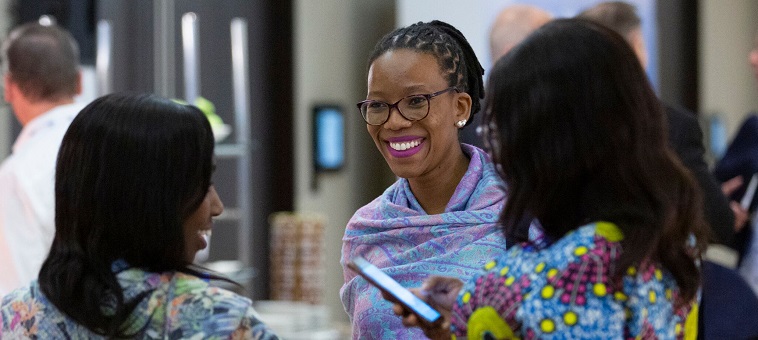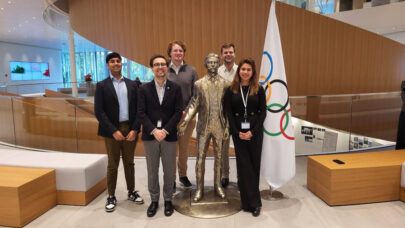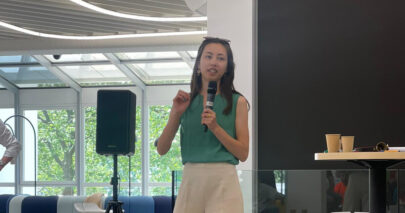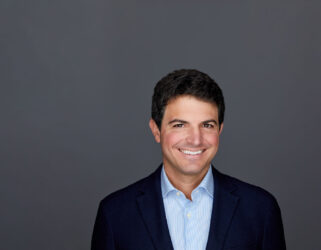That’s all from us at Orchestrating Winning Performance in Dubai, our signature programme on leadership and management. It’s been a packed week of keynote speeches, interactive sessions and networking opportunities.
We’ve listened to one of Africa’s leading tech entrepreneurs speak passionately about how education can inspire the next generation of innovators, learned why the winners of the AI race will lead the world, and heard from the director of the Arab world’s first mission to Mars. And that’s just a small selection of what took place during an inspiring week in the UAE.
Here are some of the key moments from the final day.
How can countries attract and retain the best talent?
Human capital should be the driving force of companies looking to innovate, expand and increase profits, said Arturo Bris, IMD Professor and Director of the World Competitiveness Center in the closing speech at OWP.
“The success of a business depends on the interaction of three factors”, said Professor Bris; “governance, talent and innovation.”
Talent management should play a vital role in any business strategy since it determines one of the most important assets of the company – its people.
Often, talent boils down to having quality education systems – meaning, when it comes to investing in attracting and retaining talent, companies cannot do it isolation, he added.
Instead, they need the help of policymakers who to produce policies that will create competitive advantages.
This will entail three main strategies, said Professor Bris. Firstly, invest in education policies that will help to create homegrown talent. Secondly, countries need to consider ways in which to both attract and retain talent. Lastly, nations need to implement continuous learning opportunities to encourage talent to prosper and grow.
Here’s more on what Professor Bris had to say.
Why the world needs Ecosystemic Innovation 2.0
The world faces a long list of formidable challenges, from climate change and depletion of resources to population growth and growing inequality, said Professor Frédéric Dalsace. “Resources per capita are going down. Some people have lots of resources and some hardly have any, and the gap is getting wider.”
A new type of innovation is needed to tackle these challenges, Dalsace argues. Not disruptive innovation, triadic innovation, frugal innovation, collaborative innovation – or any from the long, long list of innovation types currently familiar to many of us.
Instead, Dalsace is calling for something called ‘Ecosystemic Innovation 2.0’.
Companies need to start working with new actors, Dalsace says, particularly not-for-profits such as academia, governments, NGOs and charities.
This is merely the continuation of a long-term trend, Dalsace argued. Firms used to be very isolated and operated within their own internal – albeit extended – ecosystem, doing their own innovating and handling their own supply chains, for example. “It’s good to have an ecosystem, but it needs to become more open,” he said.
What do non-profits bring to the table?
Legitimacy, says Dalsace. Reputation, a license to operate, the ability to attract and retain employees as well as expertise and a long-term mindset that isn’t just focused on quarterly results. They also offer resources, he adds, in terms of a huge network of volunteers, communities and other people who can help firms to get things done.
For more on the principles of Ecosystemic Innovation 2.0, read our full recap.
Breaking bad habits and becoming a great leader
“Role modelling is not a side-effect of leading,” said Professor John Weeks, “it’s a skill you can learn.”
The best role models share certain characteristics, Weeks added. “Great role models are teachers, able to explain what they are doing and why. But while it’s not true that all teachers can be great leaders, it is absolutely true the other way around.”
We should be able to see things in our role models that we would like to incorporate into our own behavior. It’s also important to remember that actions matter more than words – great leaders make their behaviors visible, in big and small ways.
Weeks also spoke about how we can break the bad habits that “derail” us in certain situations.
Solutions included the need to be as specific as possible with your goal. “It’s not enough to say that you want to lose weight,” he said. “You have to be more specific. Or it’s not enough to just say I need to listen to people but saying ‘I need to listen to people in my weekly meeting and don’t interrupt’ is more likely to succeed.
“Take something fuzzy like ‘don’t be rude’ and turn it into, ‘when I’m in a situation when there is a lot of emotion, I should not lose my temper.”
Read more of Professor Weeks’ advice here.
Meaningful differentiation
The topic of branding isn’t new, but in an increasingly-competitive landscape where innovation is getting harder and harder to sustain, how can companies set themselves apart from their competitors?
Dominique Turpin, IMD’s Dentsu Chaired Professor of Marketing and the Dean of External Relations, started to answer this question by focusing on something many of us use every day: bottled water.
There are hundreds of different brands of water that exist today. As Turpin points out, if you can brand water – you can brand anything. But to really stand apart, companies need to focus on two keywords: meaningful differentiation.
This, explained Turpin, is a strategic process to create your company’s story. After you identify what sets you apart, you are ready to craft your unique value proposition, which is the central unifying message that helps you communicate your story.
Take the success story of Havaianas. They are, at the end of the day, rubber flip-flops, said Turpin. But the Brazilian brand moved into the fashion market and became a premium product. How?
The company knew that for consumers to see Havaianas as a premium product, traditional marketing communication and advertising wouldn’t be enough.
They created emotional connectivity with the audience by communicating the backstory of the sandal – a basic shoe for plantation workers in Brazil. This placed the brand in an emotional context.
It hired leading designers to come up with attractive colours and designs and, critically, included the consumer during every step of the design process, using the feedback to create more colourful and attractive styles. Soon Brazilian international celebrities were wearing the new designs and consumers started seeing Havaianas as a premium product. Sales increased and net profit boomed.
Now, about 200 million of the flip-flops are sold every year. This is meaningful differentiation in action.
You can also read highlights from days one, two, three and four of OWP in Dubai. Thanks for following our live coverage!



